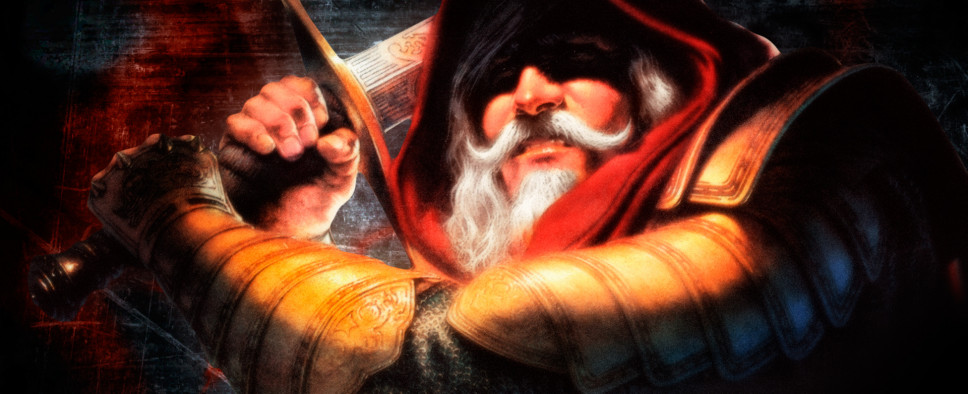Betrayal at Krondor - The Digital Antiquarian
-
Category: News ArchiveHits: 1730

Developed by Dynamix and published by Sierra On-Line back in 1993, Betrayal at Krondor is an ambitious CRPG designed to resemble an interactive fantasy book. It is also a game based on a series of novels that are in turn based on a D&D-inspired tabletop RPG. And if you're curious about how a game like this could possibly work without becoming an incoherent mess, you should check out the latest post on The Digital Antiquarian blog that features a detailed retrospective review of Betrayal at Krondor, and briefly mentions its two sequels. Here are a few sample paragraphs:
The biggest appeal of the Midkemia novels, Hallford believed, was indeed the world itself, with its detailed culture and geography and its cast of dozens of well-established characters. It would be better, he thought, to set a brand new story there, one that would let Feist’s many fans meet up with old friends in familiar locales, but that wouldn’t force them to step by rote through a plot they already knew. During the crash course on Midkemia which he’d given himself in the few weeks before starting at Dynamix — like Cutter, he’d come to Feist fandom cold — Hallford had identified a twenty-year “hole” in the chronology where he and Cutter could set a new story: just after A Darkness at Sethanon, the concluding volume in the original Riftwar Cycle that had started the ball rolling. Somewhat to everyone’s surprise, Feist was willing to entrust this young, unproven writer with creating something really new in his world. Betrayal at Krondor was off and running.
Hallford may have come to Midkemia late, but his dogged determination to capture the world exactly as it existed in the novels would come to a large degree to define the project. He calls himself a “born fanboy” by nature. Thus, even though he wasn’t quite of Feist’s hardcore fandom, he had enormous empathy for them. He points back to an experience from his youth: when, as a dedicated Star Trek fan, he started to read the paperback novels based on the television series which Pocket Books published in the 1980s. I read them as well, and can remember that some of them were surprisingly good as novels, at least according to my adolescent sensibilities, while also managing to capture the spirit of the series I saw on television. Others, however… not so much. Hallford points to one disillusioning book in particular, which constantly referred to phasers as “ray guns.” It inculcated in him a sense that any writer who works in a beloved universe owes it to the fans of said universe — even if he’s not really one of them — to be as true to it as is humanly possible.
So, Hallford wrote Betrayal at Krondor with Feist’s fans constantly in mind. He immersed himself in Feist’s works to the point of that he was almost able to become the novelist. The prose he crafted, vivid and effective within its domain, really is virtually indistinguishable from that of its inspiration, whose own involvement was limited to an early in-person meeting and regular phone conversations thereafter. Yet the latter became more rather than less frequent as the project wore on; Feist found his enthusiasm for the game increasing in tandem with his surprise at how earnestly Hallford tried to capture his novels and the extent to which he was managing to succeed with only the most limited coaching. The fan verdict would prove even more telling. To this day, many of them believe that it was Feist himself who scripted Betrayal at Krondor.
But Betrayal of Krondor is notable for more than Neal Hallford’s dedicated fan service. It’s filled to bursting with genuinely original ideas, many of which flew in the face of contemporary fashions in games. Not all of the ideas work — some of them rather pull against one another — but the game’s boldness makes it a bracing study in design.
Following the lead of GUI advocates working with other sorts of software, game designers in the early 1990s were increasingly embracing the gospel of the “mode-less” interface: a single master screen on which everything takes place, as opposed to different displays and interfaces for different play states. (For an excellent example of how a mode-less interface could be implemented in the context of a CRPG, see Origin Systems’s Ultima VII.) Cutter and Hallford, however, pitched this gospel straight into the trash can without a second thought. Betrayal at Krondor has a separate mode for everything.
The closest thing it has to a “home” screen must be the first-person exploration view, which uses 3D graphics technology poached from Dynamix’s flight simulators. But then, you can and probably often will move around from an overhead map view as well. When interesting encounters happen, the screen is given over to text with clickable menus, or to storybook-style illustrated dialog scenes. When you get in a fight, that’s also displayed on a screen of its own; combat is a turn-based affair played on a grid that ends up vaguely resembling the Battle Chess games by Interplay. (Thankfully, it’s also tactically interesting and satisfying.) And then when you come upon a locked chest, you’re dumped into yet another new mode, where you have to work out a word puzzle in order to open it, because why not? All of these modes are accompanied by different styles of graphics: 3D graphics on the main exploration screen, a no-frills Rogue-like display for the overhead movement view, pixel art with the story scenes, digitized real-world actors with the dialog scenes, the sprite-based isometric view that accompanies combat, etc.

